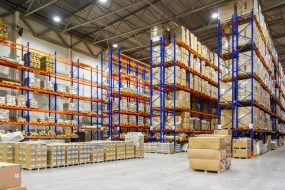

What makes the Middle East such a unique market for luxury retail? Well, for starters, the Middle East is neither a continent nor a country, and can’t be seen as a homogenous market. It’s a cultural melting pot of languages and traditions, and boasts a robust population of over half a billion people spanning across 18 countries.
E-commerce shipping and logistics services
Unlike the rest of the world, the region boasts a thriving economy where 70% of shoppers in the region claim to be increasing their spend on luxury goods in the Middle East, compared to the average of 53% in more mature markets.
70% of shoppers in the Middle East claim to be increasing their spend on luxury goods, compared to the average of 53% in more mature markets.
In fact, according to Goldstein Research, Middle Eastern premium consumers are among the leading spenders on luxury goods, the tenth highest spenders in the world.
Middle Eastern premium consumers are the tenth highest spenders in the world amongst leading spenders on luxury goods.
Related article: 5 Ways to Break into the Luxury Retail Industry
The question must be asked: What are the key drivers pushing luxury retail spending in this region?
Key driver #1: Economic growth increases spend
With five Middle Eastern countries on the list of top ten oil producers across the world, we can expect to see a large amount of foreign exchange and trade continue to flow into the region. Rising oil prices will only result in further economic growth and investment.
Key driver #2: Tourism boosts luxury retail
There is a constant influx of tourists into the Middle East, with Dubai alone receiving close to 20 million tourists annually. The Expo 2020 received over 24 million visitors from 178 countries, making Dubai one of the top five most-visited cities globally. And what do these tourists do when they visit the region? They shop for the world’s best luxury brands, of course.
Key driver #3: Emerging demographics
Approximately 50% of the population in the Middle East is under the age of 25, and 35% under the age of 18, according to a report by Deloitte. These younger demographics have higher disposable incomes and as the new, aspiring middle-class, are more likely to spend more on luxury items. This generation of wealthy, young shoppers is flourishing – putting luxury brands in an exciting position.
50% of the population in the Middle East is under the age of 25, with high disposable incomes and aspiring to be the new generation of wealthy shoppers.
Related article: 5 FMCG Brands To Watch And Learn From In 2023
Key driver #4: Saudi Arabia is growing
We’ve seen the luxury retail industry gain strength after the COVID-19 crisis and become a more dynamic industry within the Middle East in particular. Historically, Dubai was always the focus for a new store opening or brand expansion, but in 2021 there was an astonishing increase in activity in Saudi Arabia. The Kingdom’s luxury market continues to grow rapidly, with a forecast suggesting luxury sales could reach $22.4 billion by 2025.
Saudi Arabia’s luxury market is forecasted to reach over $22B by 2025.
What’s next for luxury in the Middle East?
According to Barclays analysts, the Middle East is expected to become one of the fastest-growing markets for luxury retail in 2023 – and we couldn’t agree more. With continued and renewed efforts to embrace technologies, understand their target markets, and constantly reinvent the retail game as we know it, luxury brands have the opportunity to push the boundaries of the luxury shopping experience in the region (and beyond).
Key takeaway
The rapid growth of luxury brands across the Middle East is indicative of a global shift of wealth. With economic expansion being at the forefront in this region, it’s no coincidence that it is leading the charge when it comes to luxury retail. By analysing the Middle East’s focus on economic growth, tourism, emerging demographics and the changing retail landscape of Saudi Arabia, it’s clear that this is the region to watch.




